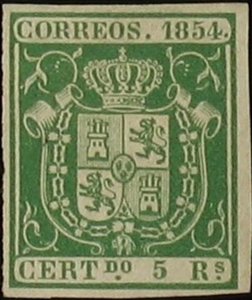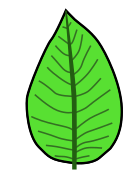Stamp: Coat of Arms (Spain 1854)
Coat of Arms (Spain 1854)
01 January (Spain ) within release Coat of Arms goes into circulation Stamp Coat of Arms face value 5 Spanish real
| Stamp Coat of Arms in catalogues | |
|---|---|
| Michel: | Mi:ES 29 |
| Yvert et Tellier: | Yt:ES 26 |
Stamp is square format.
Also in the issue Coat of Arms:
- Stamp - Coat of Arms face value 2;
- Stamp - Coat of Arms face value 4;
- Stamp - Coat of Arms face value 6;
- Stamp - Coat of Arms face value 1;
- Stamp - Coat of Arms face value 2;
- Stamp - Coat of Arms face value 5;
- Stamp - Coat of Arms face value 6;
Stamp Coat of Arms it reflects the thematic directions:
A coat of arms is an heraldic visual design on an escutcheon (i.e. shield), surcoat, or tabard. The coat of arms on an escutcheon forms the central element of the full heraldic achievement which in its whole consists of shield, supporters, crest, and motto. A coat of arms is traditionally unique to an individual person, family (except in the United Kingdom), state, organisation or corporation.
A leaf (pl.: leaves) is a principal appendage of the stem of a vascular plant usually borne laterally aboveground and specialized for photosynthesis. Leaves are collectively called foliage, as in "autumn foliage", while the leaves, stem, flower, and fruit collectively form the shoot system. In most leaves, the primary photosynthetic tissue is the palisade mesophyll and is located on the upper side of the blade or lamina of the leaf but in some species, including the mature foliage of Eucalyptus,palisade mesophyll is present on both sides and the leaves are said to be isobilateral. Most leaves are flattened and have distinct upper (adaxial) and lower (abaxial) surfaces that differ in color, hairiness, the number of stomata (pores that intake and output gases), the amount and structure of epicuticular wax and other features. Leaves are mostly green in color due to the presence of a compound called chlorophyll which is essential for photosynthesis as it absorbs light energy from the sun. A leaf with lighter-colored or white patches or edges is called a variegated leaf.
In British heraldry, a coronet is any crown whose bearer is less than sovereign or royal in rank, irrespective of the crown's appearance. In other languages, this distinction is not made, and usually the same word for crown is used irrespective of rank (German: Krone, Dutch: Kroon, Swedish: Krona, French: Couronne, etc.) In this use, the English coronet is a purely technical term for all heraldic images of crowns not used by a sovereign, and implies nothing about the actual shape of the crown depicted. A Coronet is another type of crown, but is reserved for the lower ranks of nobility like Marquesses and Marchionesses, Earls and Countesses, Barons and Baronesses, and some Lords and Ladies. The specific design and attributes of the crown or coronet signifies the hierarchy and ranking of its owner.



